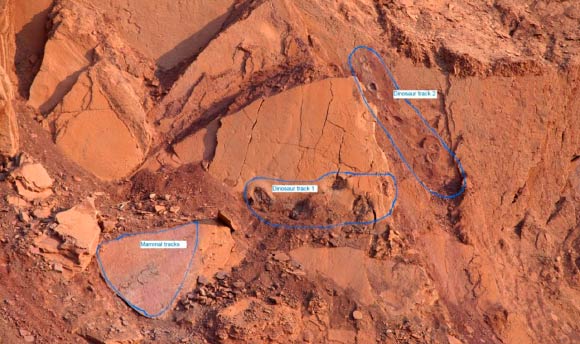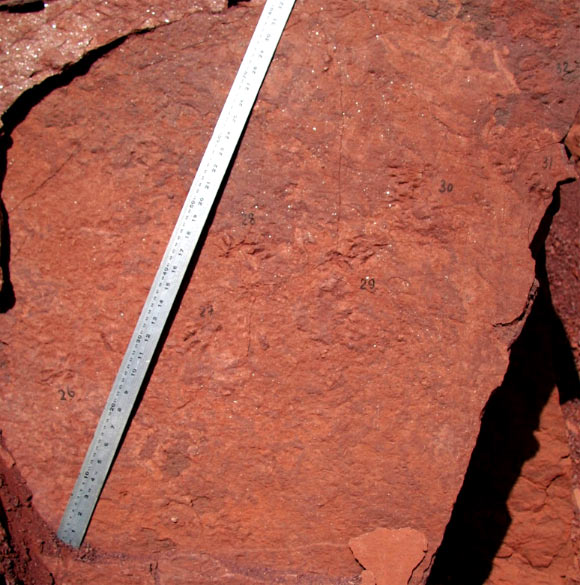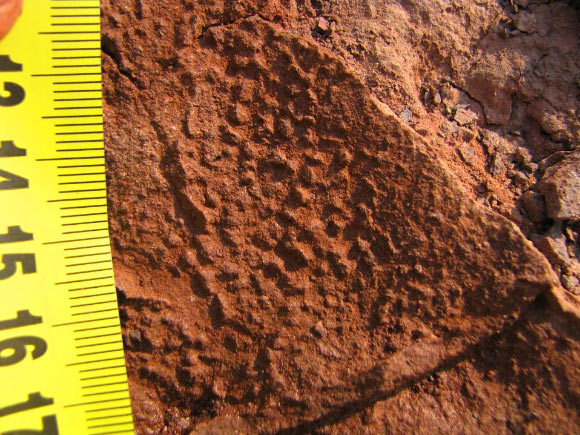118-Million-Year-Old Dinosaur, Mammal Tracks Discovered in Diamond Mine in Angola
An international team of paleontologists headed by Marco Marzola from the New University of Lisbon, Portugal, has discovered nearly 70 fossilized tracks of dinosaurs, prehistoric mammals and crocodiles in the large diamond mine Catoca in northeast Angola.

All the tracks were found in a small sedimentary basin that formed in the crater of a kimberlite pipe, dated at about 118 million years ago (Early Cretaceous).
The most important of these finds are those whose morphology is attributable to a large mammalian trackmaker, the size of a modern raccoon. There is no evidence from bones or teeth of such a large Early Cretaceous mammal from Africa or elsewhere in the world.

“The track sizes, proportions, digit lengths and divarications are similar to the Late Triassic to Middle Jurassic ichnogenus Ameghinichnus; however, the average length of 2.7 cm and width of 3.2 cm suggest the track-maker was as big as a modern raccoon,” Marco Marzola and his colleagues reported in a presentation at the 74th Annual Meeting of the Society of Vertebrate Paleontology

“Exceptionally large for its time, it is comparable in size to Repenomamus, the largest known Cretaceous mammal body-fossil, with a total length up to 68 cm.”
“The tracks are much too large to have been produced by Early Cretaceous Abelodon from Cameroon, or the gondwanathere reported from Tanzania.”

Another trackway was attributed to an ancient crocodile and has a unique laterally rotated handprint.
In addition, 18 dinosaur tracks were found nearby, one of which preserves a skin impression. These are the first dinosaur tracks found in Angola.

For almost 8 months, the Catoca mine stopped mining the sector, in order to make the study possible.
